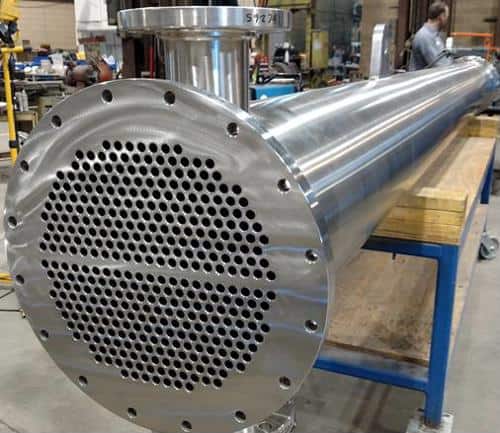Sooner or later, your heat exchanger will foul. Over time, residue will build up on the walls of your tubes and diminish the heat transfer rate. Eventually, your heat exchanger will underperform and you’ll need to take action.
While fouling is unavoidable, it can be addressed in a way that minimizes the impact. Heat exchanger performance must be closely watched so that dips in productivity are recognized right away. When efficiency begins to fall, the tubes need to be inspected for fouling, and cleaned in a timely manner.
There are many ways to clean a shell and tube heat exchanger. Each has its own pros and cons, so it’s important to understand which method, or combination of methods, is best for your operation.
Three common cleaning methods are hydroblasting, chemical cleaning and mechanical cleaning. Hydroblasting and chemical cleaning are highly effective and popular ways to clean shell and tube heat exchangers. However, they also come with disadvantages that operators can’t ignore.
Problems with hydroblasting
One of the most commonly turned-to methods for cleaning tubes is hydroblasting, according to Business & Industry Connection Magazine. Though this is an effective cleaning method, there are some downsides involved.
“Mechanical cleaning can use 90 percent less water than hydroblasting.”
Hydroblasting involves shooting jets of water into the tubes at as high a pressure as 40,000 psi. This high pressure can cause damage to the tubes, including tiny leaks that are difficult to detect. Additionally, if something should go wrong during cleaning, the water pressure can be highly dangerous to any employees nearby.
Even though hydroblasting allows for multiple tubes to be cleaned at once, it is a time-consuming process. The exchanger often needs to be disassembled, and parts transported to an area more conducive to high-pressure cleaning than the operation floor. Additionally, getting a thorough clean can be difficult on the first pass, resulting in added time inspecting and re-cleaning parts of the exchanger.
Finally, hydroblasting requires a large space in which the process can be conducted. Pumps and cleaning utensils, water trucks and a large team of people to operate all the equipment are all necessary to the process.
Complications with chemical cleaners
Some manufacturers use chemical cleaning systems to maintain their exchangers. While this method is effective, disposing of harmful chemicals properly can be an expensive endeavor, Jet News, the newsletter for the Waterjet Technology Association and Industrial & Municipal Cleaning Association, explained.
“Chemical cleaning can pose an environmental health issue.”
Additionally, chemical cleaning can pose an environmental health issue, wrote Hassan Al-Haj Ibrahim, a professor of petroleum refinery engineering at Al-Baath University in Syria.
Dialing down the pressure
Fortunately, there is a highly effective cleaning alternative to hydroblasting and chemical cleaning. Mechanical cleaning uses water at 700 psi or less, and doesn’t require the use of chemicals. Reduced water pressure allows for:
- A smaller cleaning crew.
- Cleaning to be done in place, without disassembling the exchanger, thereby also reducing the number of opportunities for equipment damage.
- Reduced water use.
- Lessened chance of injury on the jobsite.
- Less expensive cleaning.
Cost is usually the determining factor in deciding which cleaning method to use. While this may not always be the best judge of cleaning strategies, it definitely makes mechanical cleaning more attractive. Mechanical cleaning is less expensive than hydroblasting for several reasons.
First, mechanical cleaning uses as much as 90 percent less water than hydroblasting. According to BIC Magazine, cleaning 21 heat exchangers produces:
- 48,000 gallons of wastewater at 20,000 psi.
- 5,000 gallons of water at 500 psi.
This reduction in water is partially a result of lower water pressure, but also because mechanical cleaning systems allow the water to easily be turned off when not in use, while hydroblasting systems continue to shoot water 70 percent of the time they are being used. Lower water use will make the entire process less expensive.
It’s not always clear which cleaning method is best for your operation. Unfortunately, there are instances when the wrong cleaning solution is chosen, resulting in a damaged heat exchanger or an incomplete cleaning job.
To learn about the best way to maintain your shell and tube heat exchanger, reach out to the experts at Enerquip.

